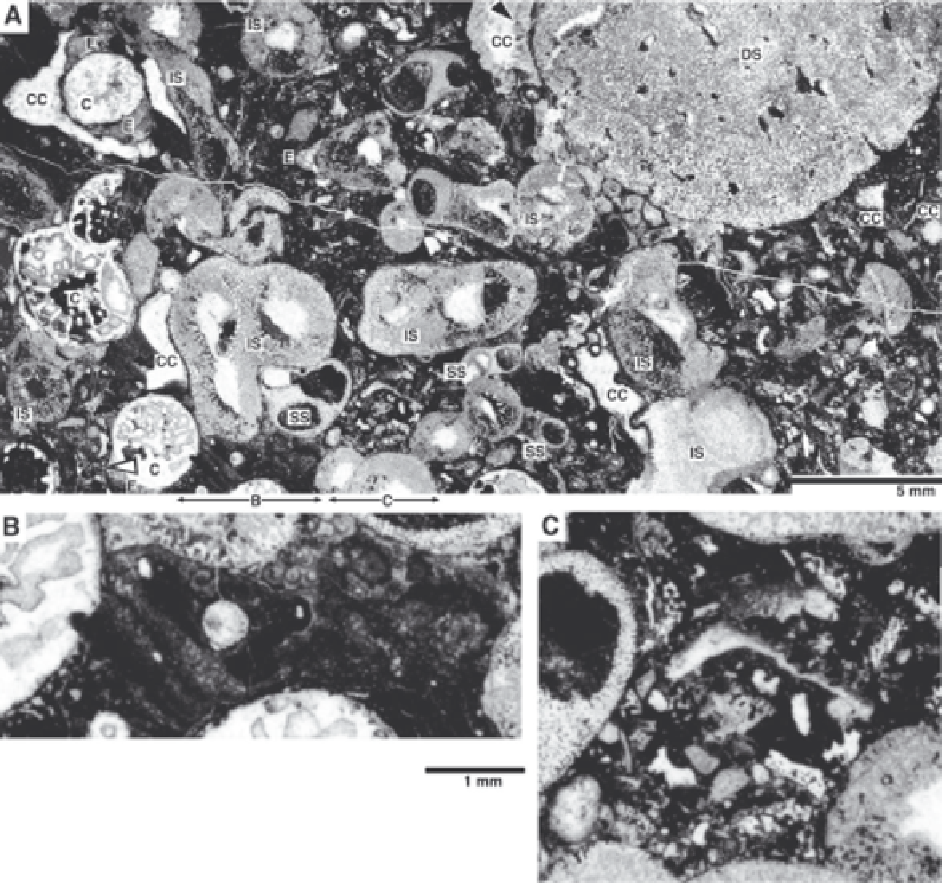Geology Reference
In-Depth Information
Fig. 16.9.
Ancient reefs are built by the upward accretion of
(1) sessile, 'reef-building' skeletal organisms, filling of voids be-
tween and within reef organisms with (2) sediment and/or with
(3) marine cement.
A:
In this sample,
reef-building organisms
are represented by diverse coralline sponges (see Sect. 10.2.3.1); DS - large
disjectoporids; IS - inozoan sponges including SS sphinctozoan sponges (
Colospongia
encrusting inozoans sponges) and a
few scleractinian corals (C -
Stylophyllum
); CC - spar-filled cavities. Corals and sponges are biogenically encrusted (E). The
white arrow points to
Alpinophragmium
, an encrusting foraminifer characteristic of the 'central reef' of many Late Triassic
reefs typical of protected areas with active reef growth. Geopetal structures within sponges, the good preservation of the
sponges, and the corresponding orientation of shelter pores suggest that most reefbuilders are in life position. The
sediment
between and within these organisms is a black micrite with bioclasts forming a packstone texture (see details in pictures B
and C). Carbonate
cement
occurs in shelter pores beneath sponges and within some inozoan sponges. Cementation (CC) of
some shelter pores started with cloudy radiaxal-fibrous marine cement (black arrow) followed by white granular cement.
Other shelter pores are basically filled with sediment.
The photographs B and C show enlarged details of the sediment between the reefbuilders.
B:
Consistent infilling of sediment both between as well as within sponges is recorded by fine-graded layers, possibly
stabilized by microbial binding (black tubular structures). Enlarged details of the lower part of A.
C:
Skeletal debris within the homogeneous micrite consists of variously sized, broken mollusk shells and sponge debris.
Considering the proportions of reef-building skeletal organisms, sediment forming the matrix of the reef limestone, and
carbonate cement, the sample would correspond to a 'close cluster reef'. This category, proposed by Riding (2002), is
characterized by closely spaced skeletons that inhibit hydrodynamic removal and sorting of trapped sediment. The rock
name of the sample is bafflestone although the sponges must be assigned to the Constructor Guild. The sample comes from
a platform margin reef. Late Triassic (Dachstein limestone, Norian): Gosaukamm, Austria. After Wurm (1981).

